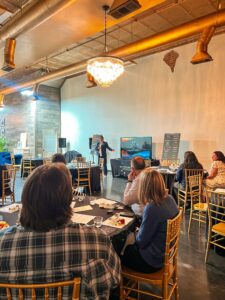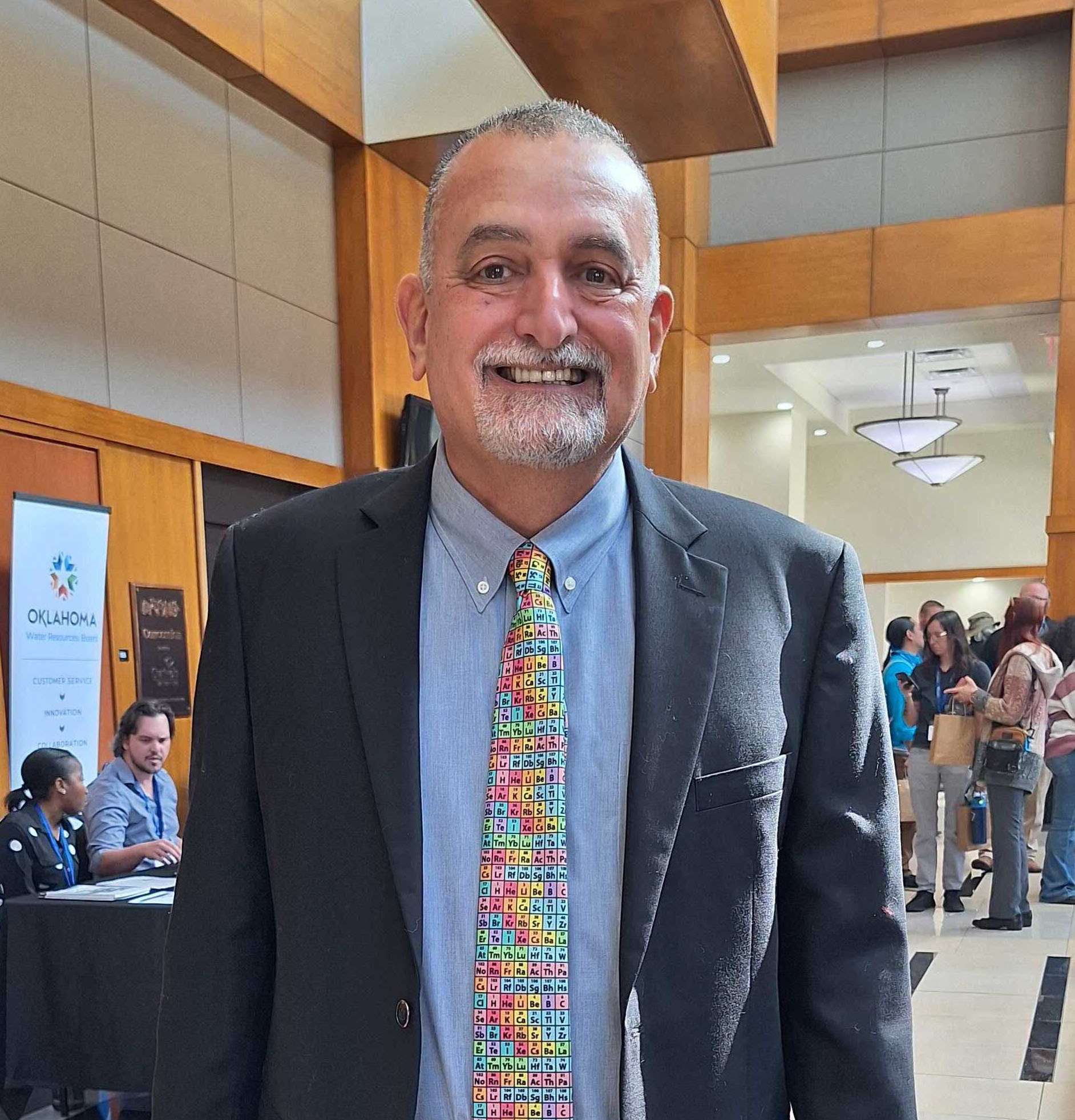
Innovative Leadership in Environmental Science:Dr. Saba Tahmassebi and the Future of Kerr Lab
September 10, 2024 by Ada Jobs
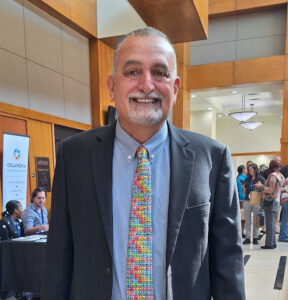 By: Sunnie Dawn Baker
By: Sunnie Dawn Baker
Dr. Saba Tahmassebi, the Director of the Robert S. Kerr Environmental Research Center, has always liked figuring out how things work. He sees problems as opportunities and enjoys discovering solutions. He doesn’t look at the world in terms of difficulties or struggles, but rather that, “Challenges are opportunities to become more robust.” He has viewed challenges as opportunities since childhood, and as he grew, so did his interest in the world around him. He enjoyed learning the laws of science, but also aimed to make a distinct impact on society. Therefore, he chose to study engineering, applying these laws to solve everyday problems.
This led him to study Chemical Engineering at the University of California San Diego, then pursue master’s level work in Petroleum Engineering from the University of Southern California, and, finally, a PhD in Petroleum Engineering from the University of Oklahoma. Although he had never experienced anything like Oklahoma, he fell in love with the state and has remained there for over four decades. He did not expect to like Oklahoma, but he also did not care whether or not he would. That was not the point of his move. However, as he was driving into Oklahoma for the first time, a young woman at the Oklahoma tourism office welcomed him so warmly and genuinely that it made him feel at home. The next day he bought a pair of cowboy boots and said, “If I’m going to be an Okie, then I’m going to be an Okie.” Because of that, he continues to contribute as an asset to our state and now, as Director of Kerr Lab, to the community of Ada.
While some might wonder why someone with a background in petroleum engineering is leading an EPA lab focused on water research, the similarities between the two fields are stunning. Both oil and water move through the ground beneath our feet. In order to access either, one must drill wells and provide enough pressure to pump it out. The same mathematical models that describe the movement and behavior of petroleum can also be used to determine how water moves and reacts to its environment. While studying at OU and running experiments in petroleum engineering, Saba shared a lab with someone from civil engineering and environmental science who studied groundwater. Even though they were from two different departments, they were essentially dealing with the same concepts and could share their insights.
These connections continue to happen as researchers learn from one another, and having someone like Saba at Kerr Lab, with his varied experiences, only provides more connections between fields that are more similar than people might imagine. For instance, a professor at OSU was studying how we might be able to extract more petroleum from the ground. However, researchers at Kerr Lab are working to remove contaminants in the soil. Though these two things might sound different, there are great similarities in the research. On the one hand they are trying to make it harder for contaminants to get into the ground and on the other they are trying to find ways to make oil move easier through the ground. Saba has brought these two researchers into contact with one another. Without this connection, they likely would not have learned of each other’s research because of the silos between the different disciplines.
The research conducted at Kerr Lab brings experts from all over the world to Ada, Oklahoma. Kerr Lab is the only EPA facility that studies groundwater in the entire nation. Nationally and internationally, scientists at Kerr Lab gain recognition and publish in the world’s most prestigious journals. We are fortunate to have this facility in Ada, especially considering that, even though it is an EPA lab, it predates that organization; it originally opened in 1965, and the EPA was created in 1972. The EPA essentially has three functions. They draft proposals for environmental policy in the United States, they write permits and do environmental oversight, and they engage in research and development; that is what is conducted at Kerr Lab. Saba says, “We do not do policy. We do not do regulations. All we do is science.”
The future for Kerr Lab is very bright. In addition to more projects and more research, expanding the possibilities for research in Ada, they are also experiencing a burst of growth as well. The EPA is relocating the analytical lab from Houston to Kerr Lab, bringing an additional 35 scientists to our community. They are currently remodeling the facility to make room for new scientists and new projects. For Saba, this is a very exciting time. Groundwater research remains crucial for our world, and Kerr Lab in Ada will continue conducting this important work. And he gets to work every day with brilliant scientists. He says, “Every day is a mind opening experience for me—working with, and conversing with, these extremely smart and capable people.” When Saba first began his journey in chemical engineering, he probably would not have expected that he would end up as director of a groundwater research facility in Ada, Oklahoma, but it is doubtful that he would want to be anywhere else.
Written by
Ada Jobs
You may also interested in:
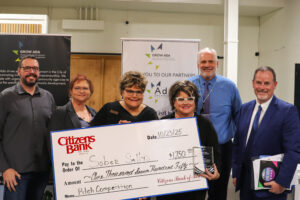
FROM TRAUMA BAY TO TECH STARTUP: HOW TWO HEALTHCARE VETERANS LAUNCHED SOBER SALLY'S TO SAVE LIVES
BY: CATHLENA SPENCER In the world of entrepreneurship, necessity is the mother of invention. For Erin Ogee and Crystal Glass, the necessity was stopping drunk driving, a mission forged from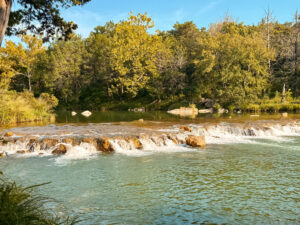
OKA' CAMP: A DAY OF WATER, WORDS, AND WISDOM
WATERSlumber, a desolate mind, trapped with thoughts of what is and what could have been. Awakened, but not by the beauty. A lust for power has gripped the heart of
GET READY TO GROW: YOUR GUIDE TO FALL INNOVATION WITH GROW ADA
BY: CATHLENA SPENCER Have you ever wondered how a good idea becomes a great business? This fall, Grow Ada is rolling out a series of events designed to be your
BUILDING FUTURES: WORK READY ADA CELEBRATES ITS FIRST YEAR
BY: CATHLENA SPENCER Just one year ago, Work Ready Ada, a new employment readiness program, was launched in partnership with Pontotoc Technology Center (PTC). The program, funded by Oklahoma Human
AI IN EDUCATION: A CONVERSATION WITH VINAYAK MITTY
BY: SUNNIE DAWN BAKER One of the areas in technology with the most potential for entrepreneurial growth is Artificial Intelligence (AI). AI is increasingly shaping every part of our lives,
FROM PARKS TO PRODUCTIVITY: THE ECONOMIC IMPACT OF ADA'S QUALITY-OF-LIFE INVESTMENTS
BY: SUNNIE DAWN BAKER Enhancing quality of life is one of the most crucial aspects of developing a local economy. In the 21st century, many people can live and work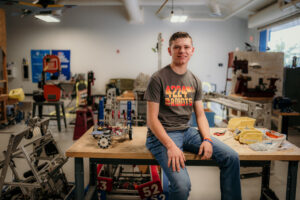
THINKING OUTSIDE THE BOX: ANDON RUSSELL, TECHNOLOGY, AND THE ENTREPRENEURIAL SPIRIT
BY: SUNNIE DAWN BAKER Andon Russell is always looking for his next entrepreneurial opportunity. He founded his own business, Russ-Tech Industries, before his freshman year of college and, despite beingMEET THE STAFF
DANIEL CASTANEDA Daniel Castaneda came to Grow Ada, formerly known as the Ada Jobs Foundation, four years ago. He holds a master’s degree in Regional and City Planning from the
KNOWLEDGE IS POWER: LOCAL EXPERT LEADS SMALL BUSINESS NETWORKING WORKSHOP
BY: SUNNIE DAWN BAKER Every month, Grow Ada hosts local Tech Meetups to help build and encourage our tech community. In some cases, there are speakers who give presentations on